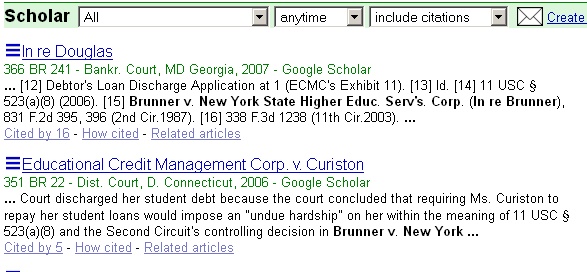Practice Tips
Using Google Scholar for legal research is a quick way to pull up full text cases or law reviews, but did you know that you you can also use it for more complex legal research using the advanced features?
Advanced Features in Google Scholar
Often an Internet search returns so many hits that tools to refine and sort your research are welcome. Google Scholar Advanced has those features. In Google Scholar Advanced you can restrict your search by publication, author, jurisdiction and date in a keyword search.

Cited by
You can also use cited by to locate cases that cite to your case. To use cited by enter a case citation or keywords on your topic in the search field and select legal opinions and journals. The cited by feature is located directly below the case summaries, select this to view cases that cite to your case.

Ranking
importance of a citation is a newer feature in cited by. Each case in the list will be
marked with three blue horizontal lines, the boldness of these lines
indicates how often your case is discussed: Three bold lines means your case
has been discussed at length, two bold lines means your case has been
discussed, and one bold line means your case has been mentioned
briefly. Although this is not a replacement for Shepardizing or keyciting a case, it is a welcome addition to free legal research.
How Cited
Another feature in Google Scholar
located next to cited by is the how cited. You can use how cited to check how others are citing to your case in articles and case law and to see if the article is citing to your case for a different purpose.
For more information on how to use Google Scholar see Bonnie Shucha's Wisblawg, Google Changes Format of Legal Citator, and, Google Scholar Improves Legal Research Capabilities at LawyerTechReview.com
Submitted by Jenny Zook, Reference Librarian on April 16, 2012
This article appears in the categories: Law Library